There is a parallel city beneath the streets of London with all the services needed to support such a complex city. Changes in the life of the city above ground are often reflected below ground with new means of transport and the closure of services that have become outdated.
One of these is the Post Office Railway which ran the six and a half miles from Paddington in the west to Whitechapel in the east, with a total of eight stations located below key postal sorting offices including the major sorting office at Mount Pleasant.
I have long wanted to see this railway and in October the British Postal Museum arranged a limited number of tours of the railway at Mount Pleasant.
My first introduction to the Post Office Railway was reading my first book on what is below the city streets, Under London, by F.L. Stevens, published in 1939. This book describes a visit to the railway when it was in full operation.
The plan for the railway was to speed the delivery of mail between the main London sorting offices and the key rail stations. The streets of London were getting more congested and removing the transport of mail from the streets would save time and help reduce congestion.
Construction of the railway stared in 1914, however construction had to be suspended due to the shortage of manpower and materials during the first world war and the sections of tunnel that were completed were used for storage of rare and valuable items from the London museums.
Construction started again in the early 1920s and the railway fully opened in 1927 and in the period up to the 2nd world war it was carrying six and a half million letter-bags and four million parcel-bags a year.
The railway closed in 2003. The closure of a number of the sorting offices above ground that connected to the railway reduced the efficiency of the service, and transport by road was seen to be a more economical method.
Since then, it has been mothballed, however the British Postal Museum have plans to open up the platforms and a section of the railway at Mount Pleasant as part of a new museum and visitor centre.
The visit to the railway started with the main workshop area. Much of the repair and maintenance of the railway was performed in-house and these workshops had the majority of facilities to keep the service running.
The view on entering the workshops:
In the workshops. Two main workshop areas leading to a common space. Trains from the railway can be driven up from the tunnels below for maintenance.
One of the workshop areas. The ramp leading down to the tunnels is on the left.
Looking down the tunnel that connects the underground tunnel system with the workshops.
Lathe in the workshop showing the in-house capabilities.
Most of the original equipment and signage is still in place. Although the railway closed twelve years ago it felt as if it could spring back into action at any time.
Looking down one of the workshop areas.
Original rolling stock in the maintenance area.
Having walked around the workshop areas, it was now down to the platform where the trains would arrive and depart with their loads of letters and parcels. Two more items of rolling stock waiting at the platform. During peak operation, forty of these trains an hour travelled underneath the streets of London carrying letters and parcels.
The one nearest the platform had been modified to carry passengers. The size of the rolling stock reflect the nine foot diameter of the main tunnels on the system.
One of the specialised trains. This one is battery powered (the batteries are carried in the large box on the top of the train). If a train needed to be recovered from the tunnels with the power switched off, the train could independently go and retrieve.
Looking down the full length of the platform.
F.L. Stevens writing in Under London in 1939 also visited the same station, and it was fascinating to recall his account of the railway in operation whilst standing on the same platforms over 76 years later:
“I made my introduction to the Post Office railway at Mount Pleasant, a station which occupies a key position in the system. It was rather queer to find oneself in a clean and large underground station so like all the others – and yet so different. There were no advertisements on the wall, and that was the first odd thing I noticed. Then there were the little perky trains, stopping and setting off again without any apparent sign of control. Of course, the control is there all right, and very thorough and alert it is, but you cannot see it. The electric locomotives have a kind of robot head and face, which seems to be perpetually at the wink, and saying ‘Pretty clever, eh?’
Picture the scene on the west-bound platform at Mount Pleasant. here comes our train, running smoothly out of the tunnel and stopping at precisely the appointed place. Actually it stops twice at Mount Pleasant; once for letters at one end of the long platform, and again for parcels at the other.
As soon as it stops, a couple of men step forward and move the containers – shaped like long cradles – on to tippers, which turn the containers upside down, emptying the bags on to conveyors running beneath the platform. In a few seconds the bags are emptied again into a “bag elevator”, which is really a big dredger, with great buckets which scoop up the bags as they fall and carry them up to a sorting office above ground.
Whilst this is going on, letter-bags from the offices above are tumbling down the chute (which is exactly like a helter-skelter at the fair ground) on to the platforms, where they are piled into empty containers in readiness for the next train. It is all done very quietly and methodically; the three-minute service is operating and everything goes like clockwork.
Meanwhile our train moves on a hundred yards or so to the parcels end of the platform. The men can see at once from the ticket fixed to the containers which parcels are meant for them, and off they come and are wheeled, not to a tipper this time, but to a conveyor, a kind of endless carpet, moving uphill at quiet a steep gradient. It is odd to watch the parcels drop on to the conveyor. Many of them seem to come to life, and act just like children. They do not want to go up the moving hill, so they dance and writhe, sit up for a minute and fall back, sometimes clutching their neighbour, turning head over heels, or just shaking with rage. After a few seconds these fits of obstinacy pass, and they lie down and disappear in the shadows of their upward journey.
But who is controlling all this, you might ask? Who knows when the men have finished unloading and loading? Well, as soon as the job is finished, and the train is ready to set off again, the head man of the platform staff presses a button. A red light appears, which means ‘ Stand clear and don’t touch’. At the same time, a green light, meaning ‘Set her off,’ appears in the underground switch-cabin which is the nerve-centre of the system.”
All is silent now on the Post Office Railway and it will not carry any more letters or parcels.
Having reached the end of the platform, it was now time to take a look at some of the tunnels.
There seem to be numerous tunnels. The main tunnels running to the next stations, loop tunnels between the platforms and tunnels up to the workshops.
Tunnels into the stations are 25 foot in diameter.
Here is the tunnel leading of to the next station, this is where the tunnels reduce to 9 foot in diameter. The tunnels between stations are on average 70 foot below ground level.
The stations that these tunnels connect were:
- Paddington Station
- Western Parcels Office – Barrett Street
- Western District Office – Wimpole Street
- West Central District Office – New Oxford Street
- Mount Pleasant – Main London Sorting Office
- King Edward Building Sorting Office – King Edward Street
- Liverpool Street Station
- Eastern District Office – Whitechapel Road
In between stations the trains would get up to 35 miles per hour. The tunnels are designed so that they slope up towards a platform to help reduce the speed of the train, and slope down from a station to help accelerate the train.
The tunnel curving into the distance.
Part of the loop tunnel between platforms was painted white with Christmas paintings in paint that will glow under ultra-violet lighting. This was for Christmas Parties organised by the staff when children would be taken on a train between the two platforms in the dark, but with the paintings on the wall glowing under the special light.
Another reduction in tunnel diameter.
Tunnels leading off in all directions.
Back on the platforms, one of the essential bits of equipment.
Standing on the platform imagining the scene as described by F.L. Stevens with the trains running up to the platforms, being unloaded, loaded with new mail and parcel bags and running on to the next station.
Some of the platform equipment for managing letter and parcel bags.
It was a fascinating tour run by the British Postal Museum with very informative and knowledgeable guides. When opened as part of the new museum, the Post Office Railway will be a great example of London’s industrial heritage.



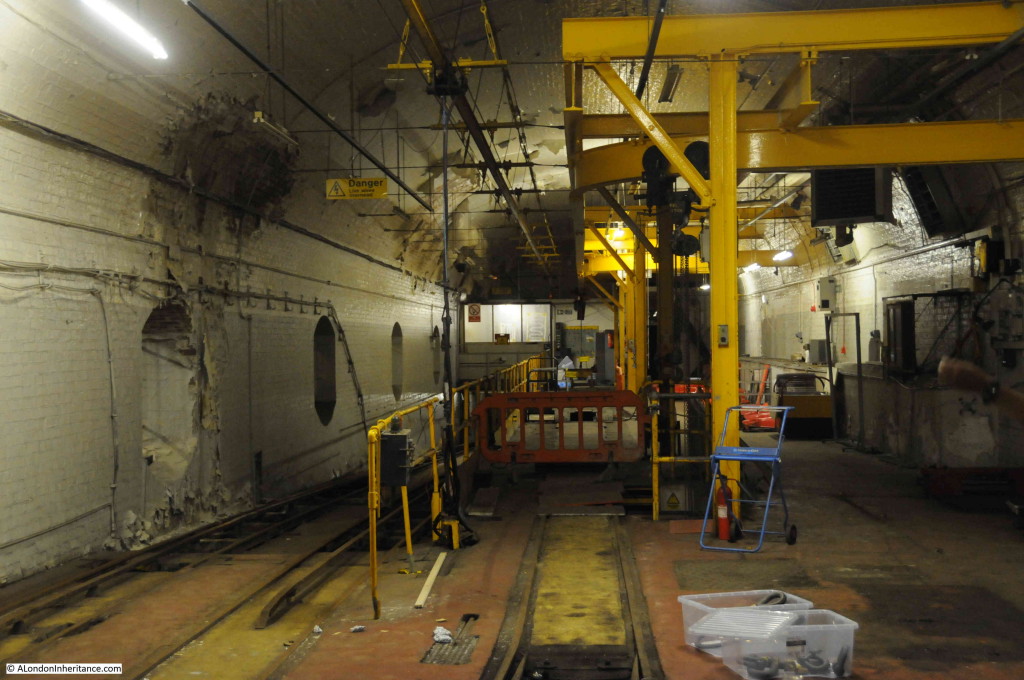

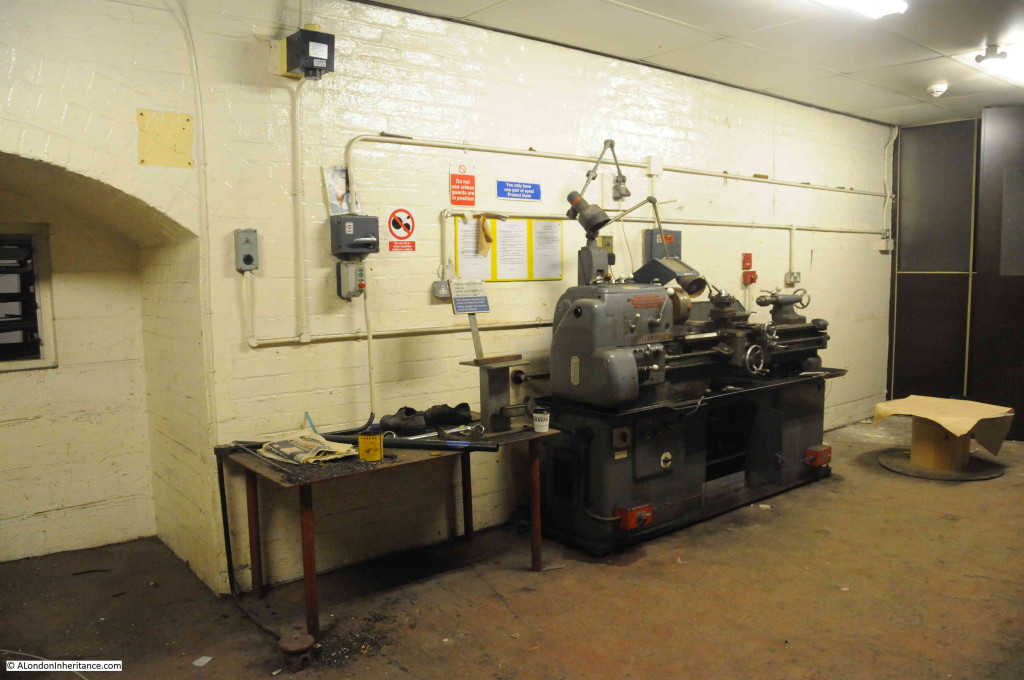
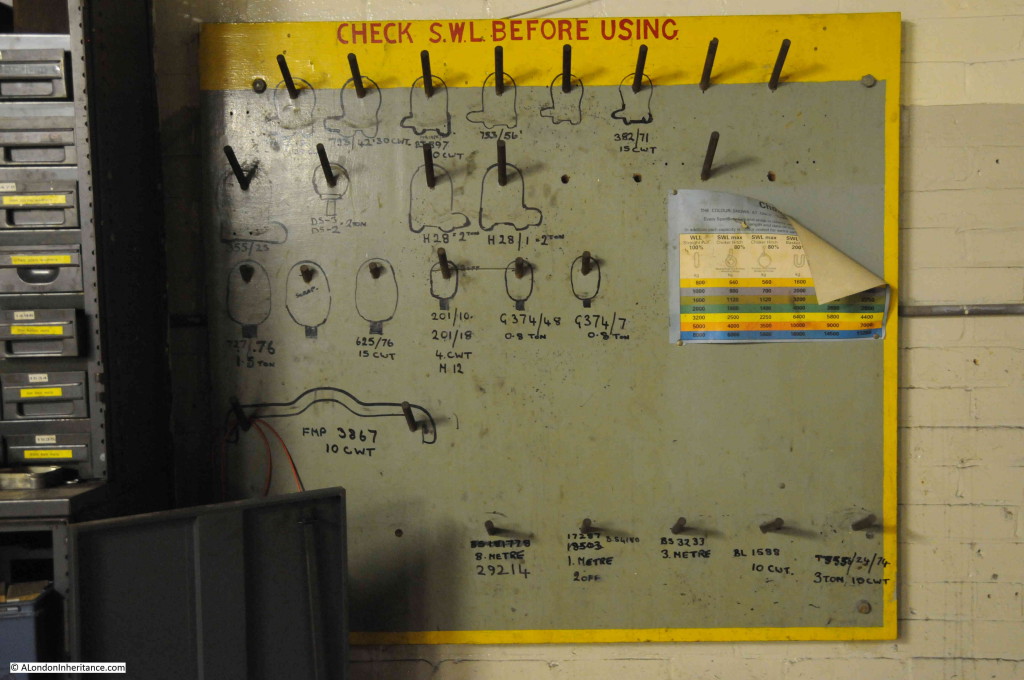

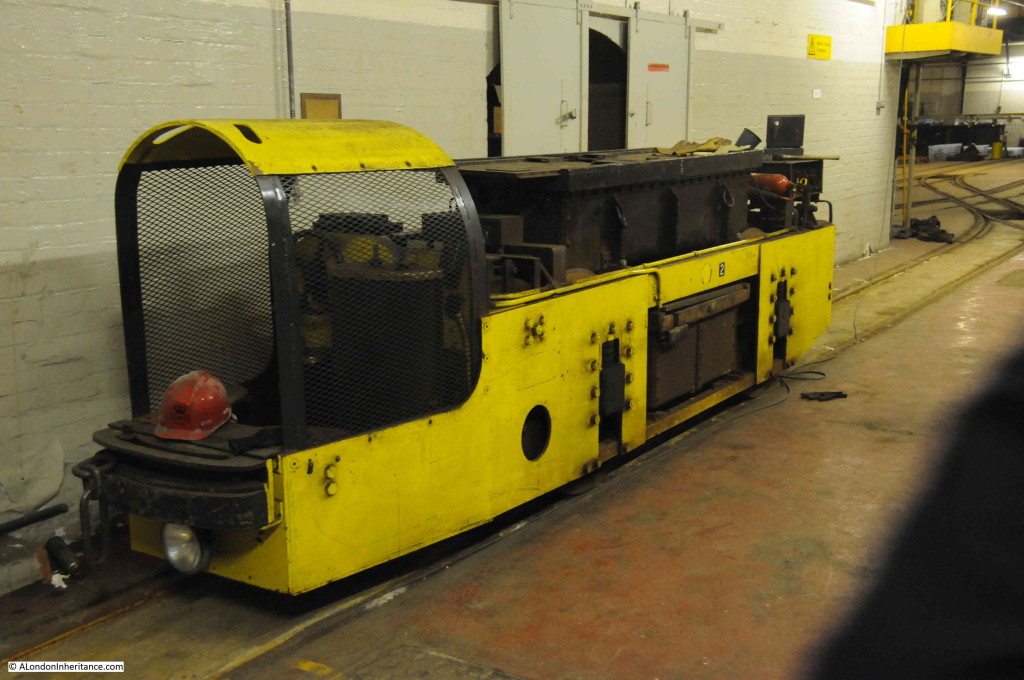

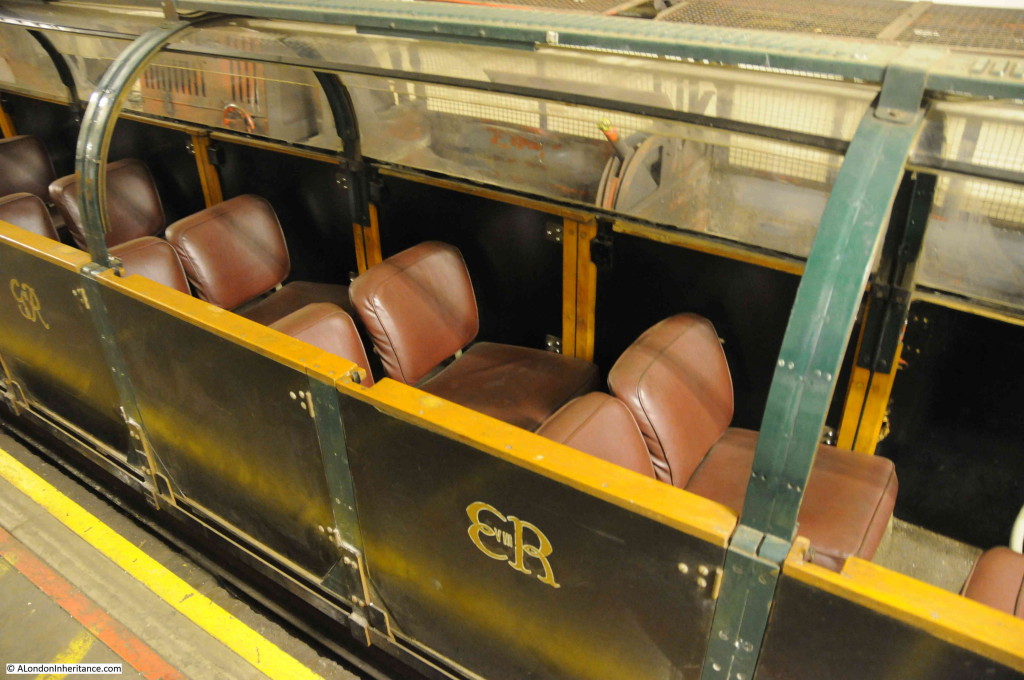
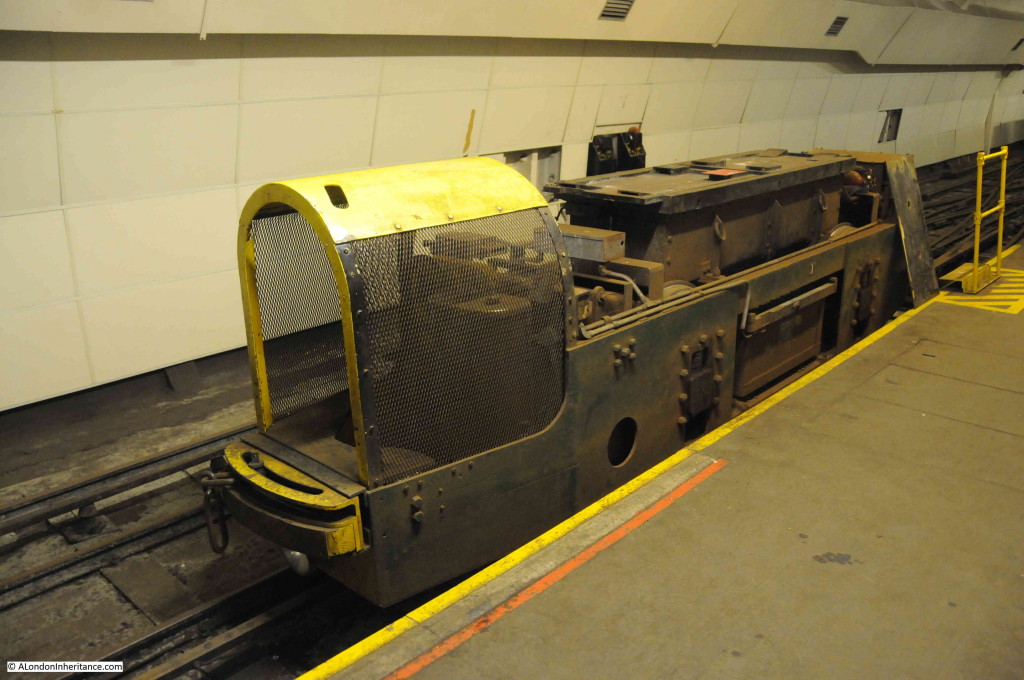


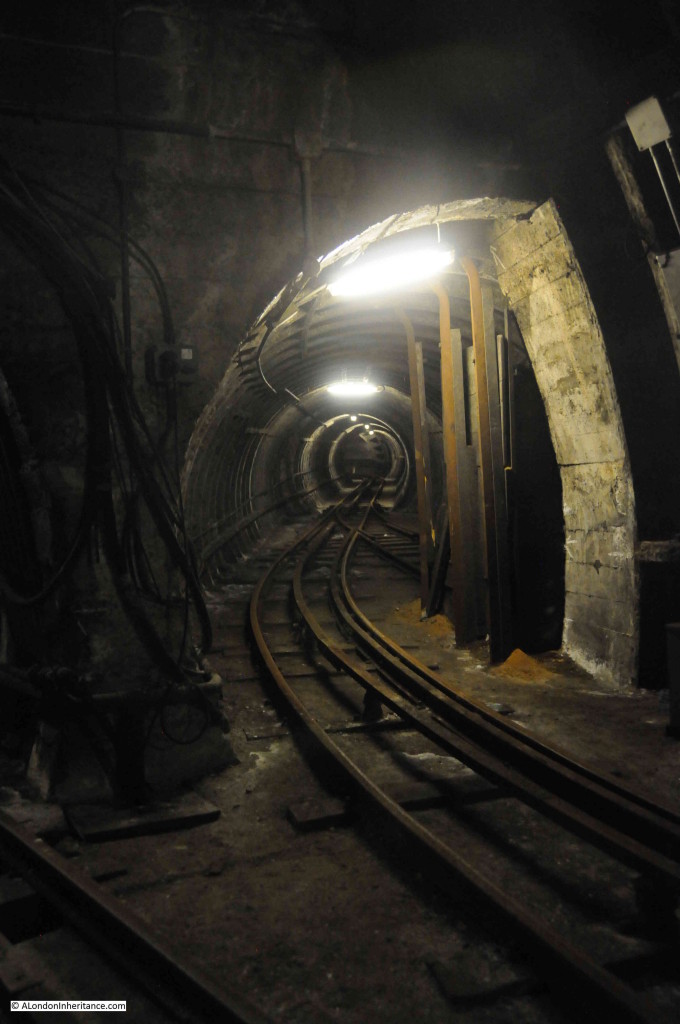
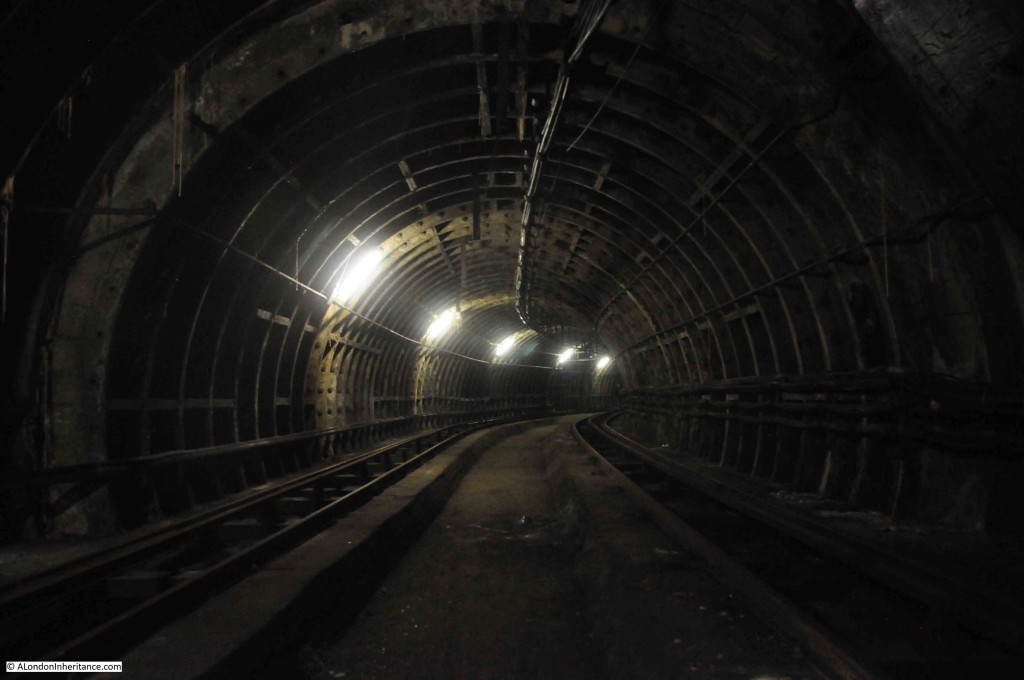








Yet another interesting article,Admin. An informative way to start my Sunday mornings – much better than watching the News! Please keep up the good work
Thanks Jo, really appreciated as always.
Ah, was this the Bloomsbury Festival? IanVisits was there too – http://www.ianvisits.co.uk/blog/2015/11/01/photos-from-the-post-office-railway-tunnels/
Yes indeed – same tour